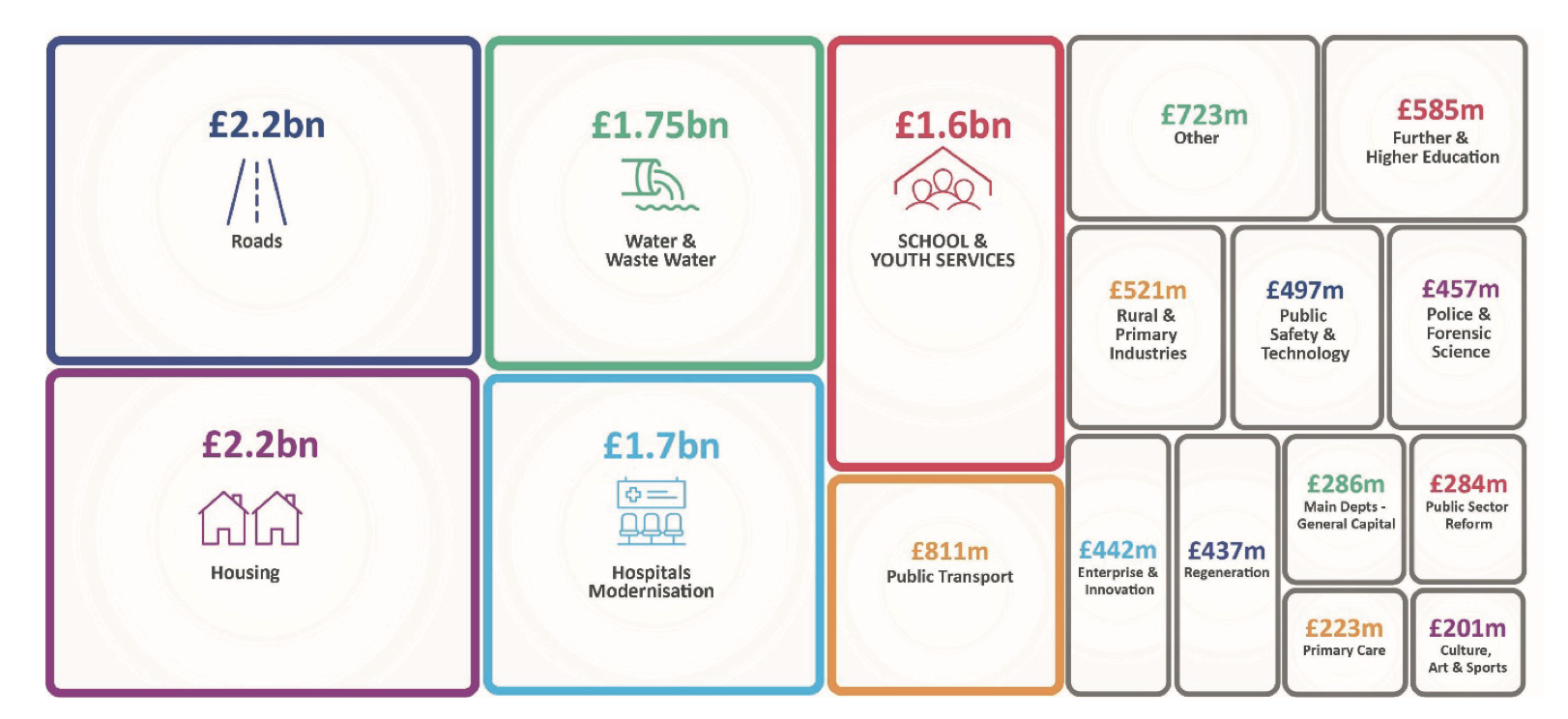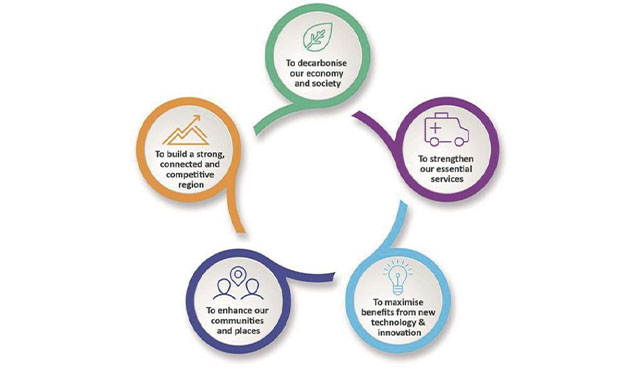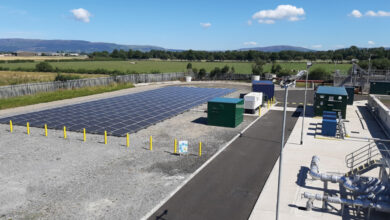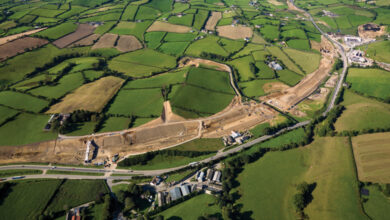Infrastructure 2050

An unprecedented approach to long-term infrastructure investment and delivery in Northern Ireland may be at risk over the Executive’s inability to deliver an agreed multi-year budget.
In January 2022, prior to the collapse of the Executive, then First Minister Paul Givan MLA and deputy First Minister Michelle O’Neill MLA published for consultation a draft Investment Strategy for Northern Ireland, a 30-year plan setting out the Executive’s priorities for infrastructure investment.
Included in the plan’s proposals is the intended delivery of a rolling 10-year investment plan and a medium-term financial plan before the end of 2022 to reflect both existing commitments and new investment programmed to 2032. These plans are intended to enable the development of detailed departmental investment plans.
However, at the basis of the plan is departmental capital planning that goes beyond any budgetary timeframe agreed in Northern Ireland in recent years. Northern Ireland has been largely forced to operate on a series of single-year budgets, mainly due to successive collapses of the institutions.
In 2021, following on from a commitment in the New Decade, New Approach agreement, the Executive agreed to publish an unagreed draft three-year budget, with the aim of generating discussion and agreement before the end of the current mandate in 2022. However, the resignation of Paul Givan, which effectively ended the Executive’s collective decision-making powers, now means that the Executive’s departments will again be forced to operate on a single-year basis, at least until a new Executive is installed in the next mandate.
Failure to deliver on what was to be Northern Ireland’s first multi-annual budget for eight years does not bode well for long-term investment planning. The draft Investment Strategy, produced before the Executive’s collapse, itself acknowledges that in recent years “long-term investment planning has been hampered by immediate-term (one- to three-year) budget settlements”.
“This has inhibited our ability to plan on a multi-year basis and has tended to favour smaller and less strategic investments that can be delivered in the shorter timeframe,” the consultation document states.
Despite the Executive’s budgetary challenges to date, a Medium-Term Infrastructure Finance Plan will look to cover a rolling 10-year period, updated each year in line with the Northern Ireland budgetary process. To commence, the plan will require confirmed Capital Departmental Expenditure Limits (CDEL) for all departments and related public bodies in line with committed HM Treasury Spending Review allocations to the Executive. It will also be supplemented by an assumption of indicative capital allocations for years beyond the Northern Ireland Budget and include an assessment of all other sources of public finance.
Ambition
The Executive’s vision for infrastructure is that it will “enable everyone to lead a healthy, productive and fulfilling life, and that it will support sustainable economic development and protect our environment”. Highlighting 10 years of investment totalling £14.9 billion (£8,000 per person), the Infrastructure 2050 document acknowledges “significant deficiencies” in existing infrastructure, particularly in the areas of health, housing, water and roads and sets out looming challenges in the shape of demographic changes, digitalisation and climate change.
Infrastructure spend 2011 – 2021

ISNI Investment Objectives

The Strategy sets out five key objectives for investment in the coming decades in the form of:
1. Decarbonising the economy and society.
2. Strengthening and protecting essential services.
3. Building a strong, connected and competitive region.
4. Enhancing communities and places.
5. Maximising benefits from new technology and innovation.
Although no binding commitments are made, the strategy does indicate priorities in relation to its five key objectives. For example, under the decarbonisation objective, plans include the development of a circular economy, expansion of the public rapid EV charging network and investment in coastal erosion adaptation.
In response to essential services infrastructure, the strategy set out ambitions to strengthen secondary, primary and mental health through investment and to adopt a whole-system approach to rationalising and modernising the education estate. Additionally, it pledges to invest in the further transformation of the justice system and increase wastewater treatment capacity.
For communities and places, the strategy will seek to redefine the purpose of Northern Ireland’s high streets/urban centres through regeneration investment. Alongside the reallocation of funding and road space to encourage active travel, the Strategy sets out a commitment to continue to invest in the building of additional housing and refurbishment of existing social homes.
In relation to maximising the benefits from emerging technologies, the Strategy says the Executive will: digitise public service access points; upgrade the public service digital infrastructure; take advantage of data analytics and data science; and improve information security and network resilience.
Oversight
Interestingly, accountability for the Executive’s Infrastructure Investment Plan is set to be “sharpened”. While the Executive will have responsibility for strategic oversight of infrastructure investment and will be included on the Executive’s agenda twice per year, scrutiny of delivery of the Investment Plan and Medium-Term Infrastructure Finance Plan will be the remit of the Northern Ireland Civil Service (NICS) board, sitting as the Investment Strategy Northern Ireland (ISNI) board.
The Strategic Investment Board has the statutory function to develop the Investment Strategy and will provide a secretariat function to both the Ministerial Strategic Oversight Group and the NICS Programme Board.
Consultation on the draft Investment Strategy for Northern Ireland will run until 20 April 2022. Following the consultation period, a full analysis report will be prepared for the incoming Executive’s consideration.





